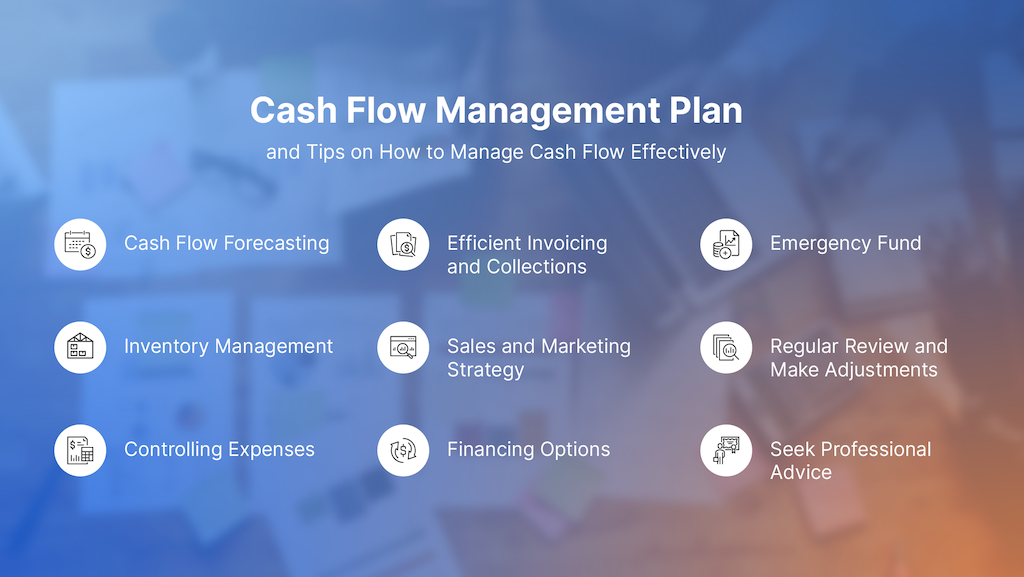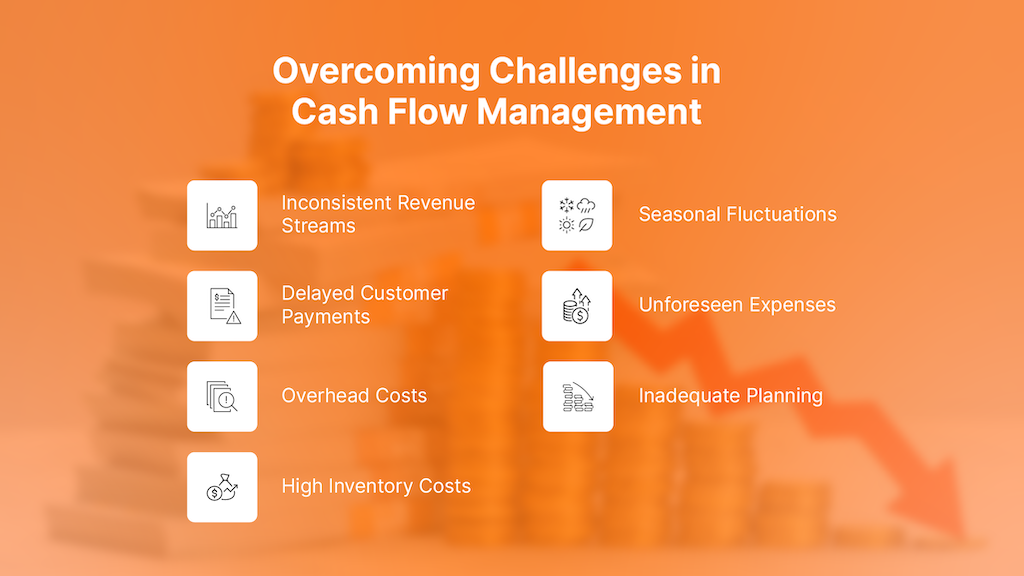Cash flow management is a critical aspect of running a successful business. It involves monitoring, analyzing, and optimizing the flow of money in and out of your company. In this third and last installment of our cash flow series, we aim to equip you with helpful tips on managing your business’s cash flow and avoiding some of the common pitfalls. And if you haven’t, do check out our first and second part of the series on: What is Cash Flow, and How to Calculate Cash Flow.
Importance of Cash Flow Management
- Sustainability: Maintaining positive cash flow is essential for the ongoing sustainability of your business. It allows you to meet your financial obligations, such as paying suppliers, employees, and utility bills.
- Growth: Effective cash flow management is not just about survival; it’s a catalyst for growth. When you have a surplus of cash, you can reinvest in your business, expand operations, launch new products, or enter new markets.
- Risk Mitigation: A strong cash flow position helps your business weather unexpected challenges. In times of economic downturns or unforeseen expenses, you can rely on your cash reserves rather than accumulate debt.
- Financial Health: Regularly monitoring cash flow provides insights into your business’s financial health. It allows you to identify trends, areas for improvement, and potential issues before they become critical.
Cash Flow Management Plan and Tips on How to Manage Cash Flow Effectively
To help you better visualize what cash flow management entails, we’ve crafted a sample plan that encompasses different aspects of a good cash flow management plan. Use this as a base to help you kickstart your own cash flow management plan. Apply these tips to your business strategy to manage cash flow effectively.
This sample plan is based on a medium-sized clothing store in Indonesia. Feel free to tweak it to suit your business.
- Cash Flow Forecasting:
- Create monthly cash flow projections for at least the next 12 months. These projections should include expected sales, expenses, investments, and financing activities.
- Consider seasonality and local trends in the Indonesian fashion market. For example, anticipate higher sales during festive seasons or holidays.
- Regularly update your cash flow projections as conditions and business performance change.
Tip: Invest in accounting software or financial forecasting tools to help you better predict and plan for cash flow scenarios.
- Inventory Management:
- Monitor your inventory levels closely to prevent overstocking, which ties up cash, and understocking, which can lead to missed sales opportunities.
- Implement just-in-time inventory practices to minimize storage costs and ensure that you have the right amount of stock on hand.
Tip: Negotiate favorable terms with suppliers to optimize your inventory turnover.
- Controlling Expenses:
- Regularly review and analyze your expenses to identify areas where cost savings can be achieved. This could involve renegotiating contracts, switching to more cost-effective suppliers, or reducing non-essential spending.
- Set a budget for operating expenses and stick to it, avoiding unnecessary expenditures.
- Efficient Invoicing and Collections:
- Issue invoices promptly and ensure they are accurate and clear. Consider using invoicing software for efficiency.
- Implement a follow-up process for overdue payments, sending reminders and making calls as needed.
Tip: Offer discounts for early payments to incentivize customers to settle their bills sooner.
- Sales and Marketing Strategy:
- Develop a marketing strategy that aligns with your cash flow projections. Avoid overcommitting to marketing expenses during periods of lower expected cash flow.
- Consider running sales and promotions strategically to boost sales during slower seasons.
Tip: Leverage social media and online marketing to reach a wider audience and increase sales.
- Financing Options:
- Establish a relationship with a local bank or financial institution to explore financing options when needed. This could include a line of credit or a short-term loan.
- Carefully assess the terms and interest rates associated with any financing, and ensure that they align with your cash flow projections.
- Emergency Fund:
- Maintain a cash reserve to cover unexpected expenses or temporary cash flow gaps. This fund acts as a safety net to prevent financial strain during challenging times.
Tip: The ideal amount for your emergency fund depends on the size and nature of your business. Aim to have at least three to six months’ worth of essential expenses readily available.
- Regular Review and Make Adjustments:
- Continuously monitor your cash flow and compare it to your projections. Make adjustments to your plan as needed.
Tip: Stay informed about changes in the Indonesian fashion market and adjust your strategies accordingly.
- Seek Professional Advice:
- Consider consulting with a financial advisor or accountant who has expertise in the Indonesian market. They can provide guidance and help you make informed financial decisions.
Additional Tips:
- Diversify Revenue Streams: Reduce reliance on a single source of income by diversifying your product or service offerings.
- Reinvest Wisely: When you have excess cash, consider reinvesting it in your business for growth opportunities or paying down high-interest debt.
Once you’ve mastered the above steps to manage your cash flow effectively, your business will be better positioned to weather storms and achieve greater growth.
Overcoming Challenges in Cash Flow Management
Cash flow management can present challenges for businesses in Indonesia due to economic volatility and market uncertainties. Here are some of the common challenges and how to overcome them:
- Inconsistent Revenue Streams:
Challenge: Many businesses, especially small ones, face irregular income patterns. Sales may fluctuate due to seasonality, economic cycles, or other factors, making it difficult to predict cash inflows accurately.
Solution:
- Create cash flow projections based on historical data. This can help you anticipate lean months and allocate resources accordingly.
- Diversify your product or service offerings to reduce reliance on a single income source.
- Consider offering subscription-based services to establish recurring revenue streams.
- Delayed Customer Payments:
Challenge: When customers delay payments or extend their payment terms, it can strain your cash flow, especially if you have operational expenses to cover.
Solution:
- Implement efficient invoicing and billing processes. Send out invoices promptly and offer multiple payment options to expedite payments.
- Set clear payment terms and enforce late payment penalties to incentivize timely payments.
- Consider using invoice factoring services if cash flow is severely impacted by delayed payments.
- Overhead Costs:
Challenge: Operational expenses, such as rent, utilities, and employee salaries, can be fixed and hard to adjust quickly when facing cash flow issues.
Solution:
- Continuously review your expenses. Identify areas where you can cut costs without compromising the quality of your products or services.
- Negotiate with suppliers for more favorable terms or seek competitive bids for essential services.
- Explore opportunities to reduce overhead costs, such as sharing office space or implementing energy-saving measures.
- High Inventory Costs:
Challenge: Holding excessive inventory ties up cash, while insufficient inventory can lead to missed sales opportunities.
Solution:
- Implement just-in-time inventory practices to minimize storage costs while ensuring you have the right amount of stock on hand.
- Analyze your sales data to make more accurate inventory predictions and avoid overstocking.
- Consider using dropshipping or consignment arrangements to minimize inventory risks.
- Seasonal Fluctuations:
Challenge: Seasonal businesses, such as those in the tourism or retail sectors, often experience substantial cash flow fluctuations.
Solution:
- Plan ahead by saving excess cash during peak seasons to cover expenses during slower periods.
- Explore diversification by offering products or services that appeal to different seasonal markets.
- Leverage online marketing and e-commerce to reach a broader audience during off-peak seasons.
- Unforeseen Expenses:
Challenge: Unexpected costs, such as equipment breakdowns or legal issues, can put a strain on your cash flow.
Solution:
- Maintain an emergency fund or credit line specifically for unforeseen expenses.
- Conduct regular maintenance and inspections to reduce the risk of unexpected repairs or replacements.
- Review your insurance policies to ensure you have adequate coverage for potential liabilities.
- Develop contingency plans for adverse scenarios, such as a sudden drop in demand or supply chain disruptions.
- Inadequate Planning:
Challenge: Insufficient planning and monitoring of cash flow can lead to reactive rather than proactive decision-making.
Solution:
- Create and regularly update detailed cash flow projections to anticipate financial challenges.
- Implement accounting and financial software to streamline cash flow tracking and reporting.
- Seek professional advice from accountants, financial advisors, or mentors who can provide guidance and expertise.
- Keep abreast of economic trends and government policies that may impact your industry and cash flow
Managing cash flow is an ongoing process that requires attention, adaptability, and a clear understanding of your business’s financial dynamics. By recognizing these common challenges and applying proactive strategies, you can maintain a healthy cash flow, weather financial storms, and position your business for long-term success.
Tools and Resources for Monitoring Cash Flow
- Accounting Software
Investing in reliable accounting software can significantly streamline your cash flow management process. These software tools offer features such as invoicing, expense tracking, and cash flow forecasting. Popular accounting software options for businesses in Indonesia include Zahir Accounting, Accurate Online, and Jurnal.
- Financial Reports
You can get valuable insights into your business’s financial health by regularly reviewing financial reports, including balance sheets, income statements, and cash flow statements. They help you track your cash flow over time and identify trends or anomalies that require attention. - Outsourcing Cash Flow Management
In some cases, businesses may choose to outsource their cash flow management to specialized firms or financial experts. These professionals can help you develop cash flow strategies, monitor your financial health, and provide guidance on improving your cash flow.
By leveraging these tools and resources, businesses in Indonesia can gain better control over their cash flow, reduce financial uncertainties, and position themselves for sustainable growth in the ever-evolving business landscape.
Next Steps for Your Business
In the dynamic and often challenging business environment of Indonesia, cash flow management is not just a financial task; it’s a survival strategy. By understanding the fundamentals of cash flow, differentiating between operating, investing, and financing cash flows, and creating accurate projections, businesses can navigate economic fluctuations with confidence.
As you embark on your journey to master cash flow management, consider the following steps:
- Implement Sound Practices: Apply the strategies and tips discussed in this guide to improve your cash flow management.
- Regularly Update Projections: Continuously monitor and update your cash flow projections to align with changing business conditions.
- Seek Professional Guidance: If you’re unsure about specific financial aspects, consider consulting with financial advisors or accountants who have expertise in the Indonesian market.
Managing cash flow is an ongoing process that requires diligence and adaptability. While external factors may pose challenges, a solid understanding of cash flow principles and effective management strategies can help Indonesian businesses thrive and achieve long-term financial stability.
Thank you for joining us on this comprehensive journey through cash flow management for Indonesian businesses. We hope this 3-part guide has provided you with valuable insights and practical tools to take control of your business’s financial future and build a thriving business. If you haven’t already, remember to review What is Cash Flow and learn How to Calculate Cash Flow in our previous blogs.












